During my trip to Colombia last summer, I visited a cacao farm and discovered the fascinating process of transforming cacao fruits into the chocolate bars we all know and love. It was a wonderful experience where I learned a lot, and by the end of the day, I thought to myself, “My kids would love to know about this!” That’s the main reason I wanted to share all the information I gathered with them, and I even began thinking about designing a unit study on cacao.
If you, like me, are passionate about the Montessori methodology, its approach to teaching, and its learning environment, you’ll love working with my cacao unit. The way I use my units with my students is very experiential—I bring real objects into the classroom so they can touch, observe, and explore them. This approach, which focuses on the child, encourages learning through experimentation and discovery. Next, I’ll explain how to use this unit with your students.
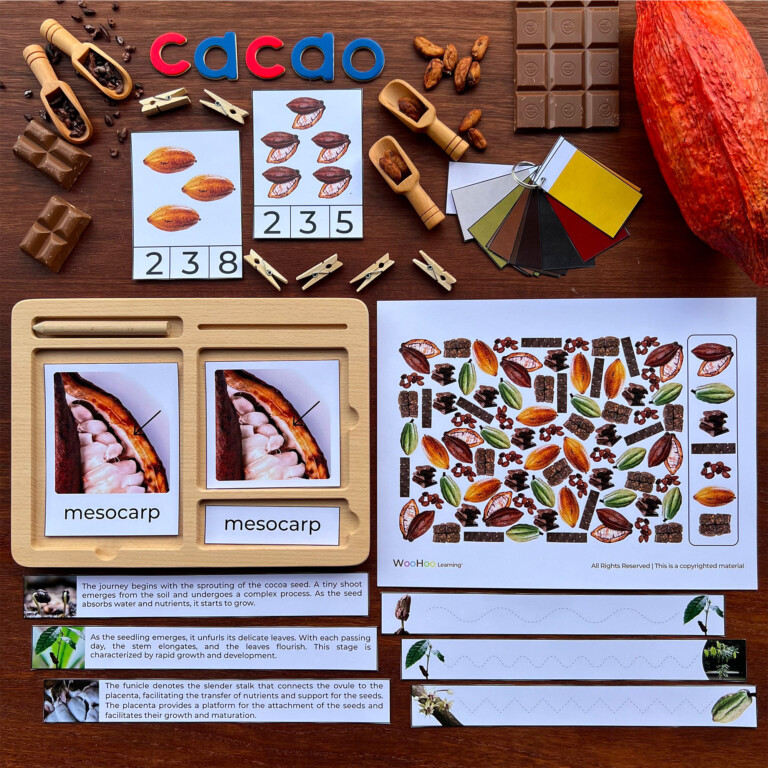
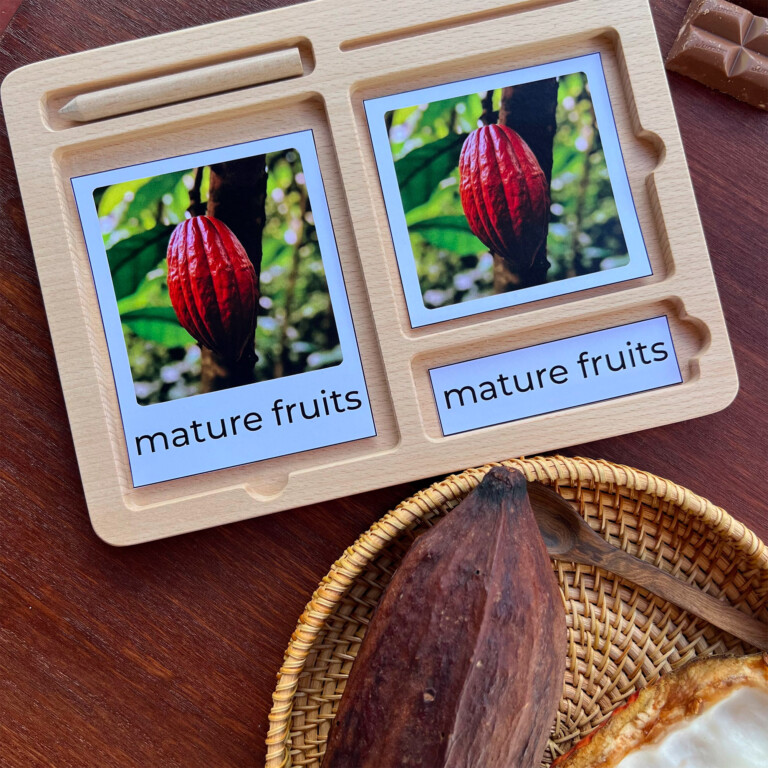
First, I recommend starting with the cacao anatomy section. If possible, bring a cacao pod (or more) into your class so children can examine it up close—touch it, explore it, and engage with it. Before sharing any information, introduce the cacao pod with some guiding questions: “What do you think this is?”, “Do you think this is a fruit?”, “What’s inside?”, “Where do you think it comes from?”
After the hands-on exploration of the cacao pod, revealing that it is the fruit of the cacao tree, you can move on to learning about its different parts: seeds, funicle and placenta, pulp, exocarp, mesocarp, and endocarp. The labeled poster will be a great tool to introduce these parts. Then, you can use the 3-part cards to help students work on vocabulary and specific definitions.
"At some given moment it happens that the child becomes deeply interested in a piece of work; we see it in the expression on his face, his intense concentration, the devotion to the exercise"
The Discovery of the Child, Maria Montessori
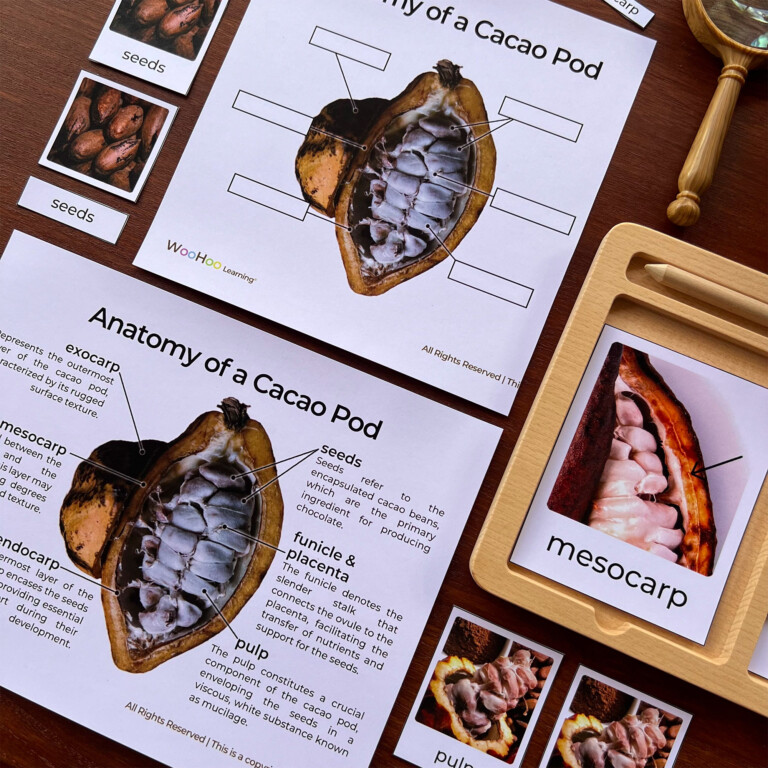
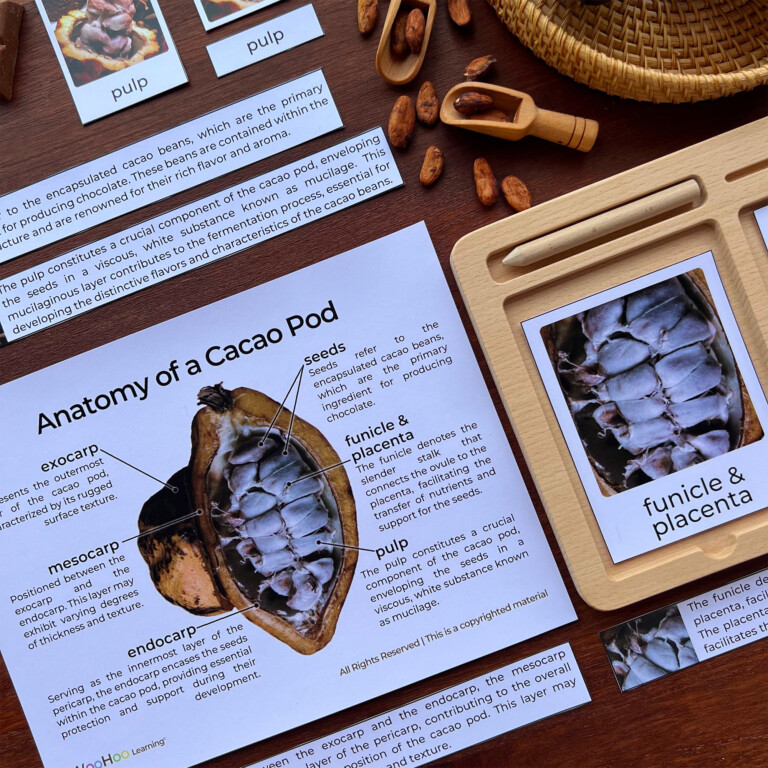
Once the children are familiar with the cacao pod and its anatomy, it’s time to delve into the life cycle of the cacao plant. You can start this section by asking questions like, “Where does this pod come from?”, “Was it always like this, or has it transformed?” These questions will help students prepare to learn about the six stages of the cacao plant’s life cycle: sprout, seedling, tree, flowers, cacao pods, and mature fruits. To support this learning, you can use the definition cards, the 3-part cards, and the 4-part cards with definitions.
Here are some of the elements I’ve used to accompany this unit and their purchase links, in case you’re interested:
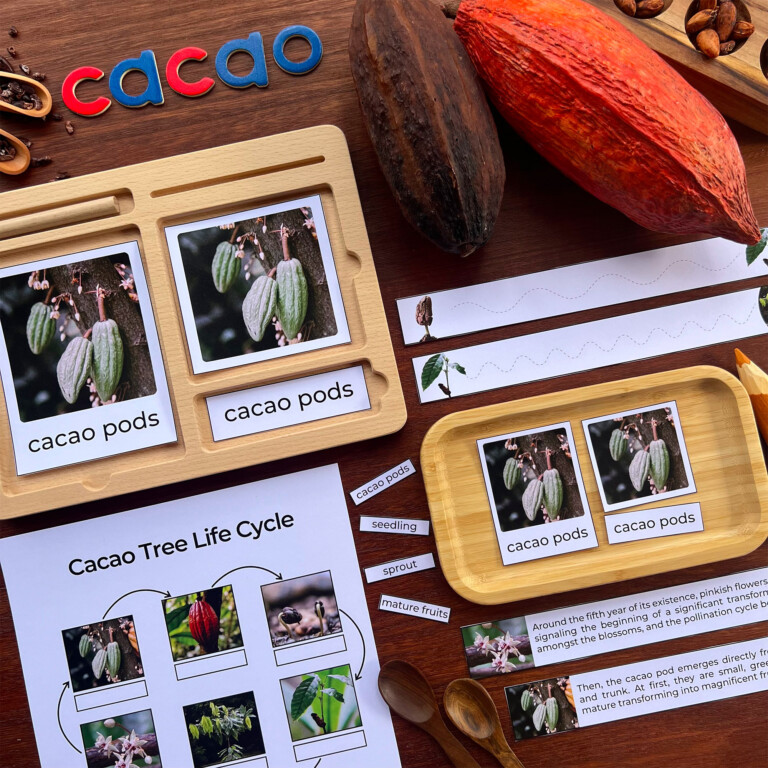
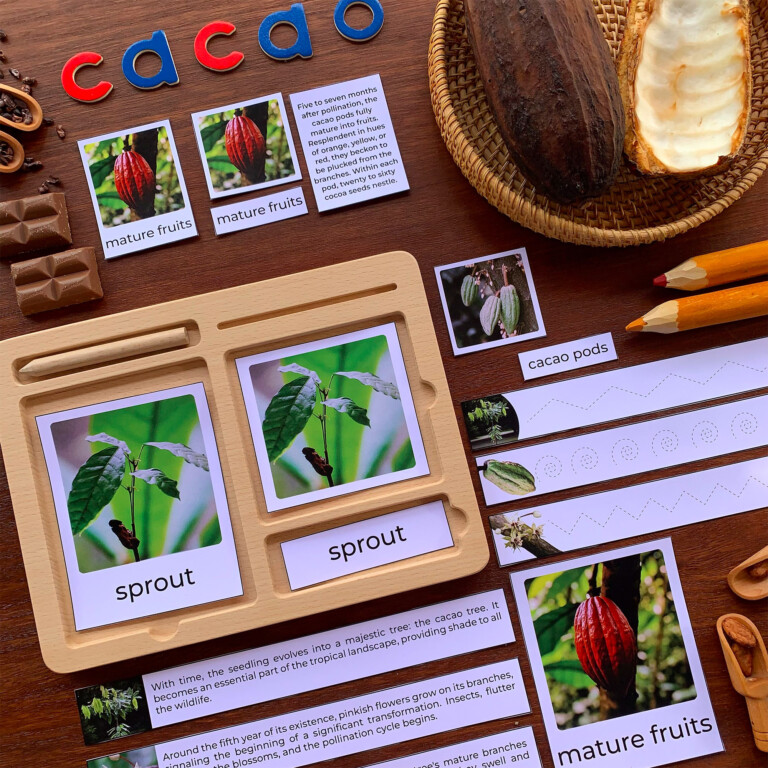
After understanding the anatomy and life cycle of the cacao pod, the children will be ready to learn about the process of transforming cacao from tree to chocolate bar. As always, I suggest starting with some thought-provoking questions: “How do you think chocolate is made?”, “Do you have any idea of the transformation process?” You might also bring different types of chocolate to class, allowing the students to touch, experiment with, and hypothesize about how it’s made.
So, how is chocolate made? It undergoes a complex process that includes several steps: harvesting, fermentation, drying, roasting, cracking and winnowing, grinding and conching, tempering, pouring into molds, and finally, becoming the finished chocolate bar.
Once our students have learned about the anatomy of the cacao pod, the life cycle of the cacao tree, and the chocolate-making process, we can move on to activities included in the unit or explore more about cacao. For instance, you could delve into the history of cacao, interesting facts about cacao, or the cacao belt.
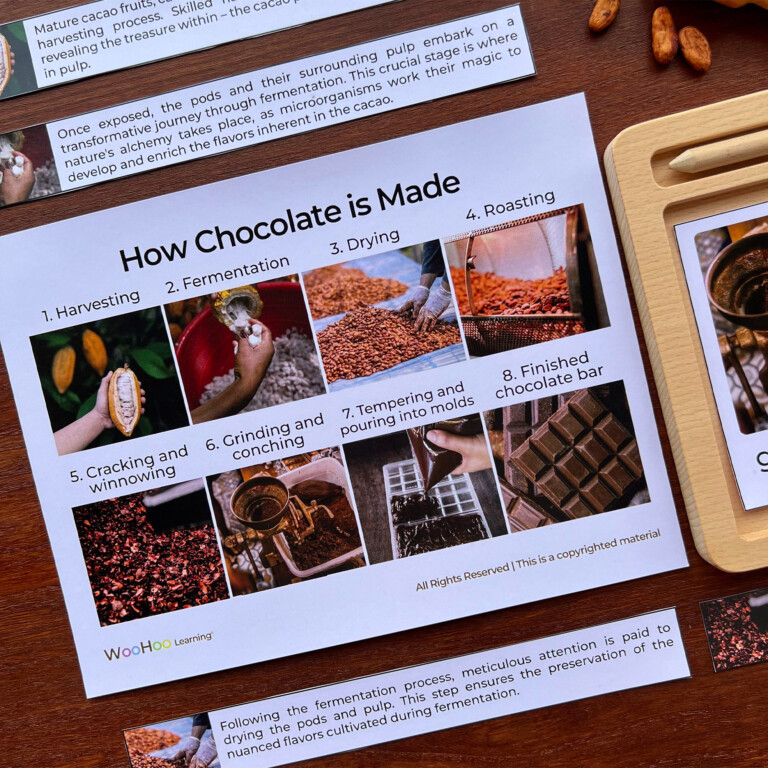
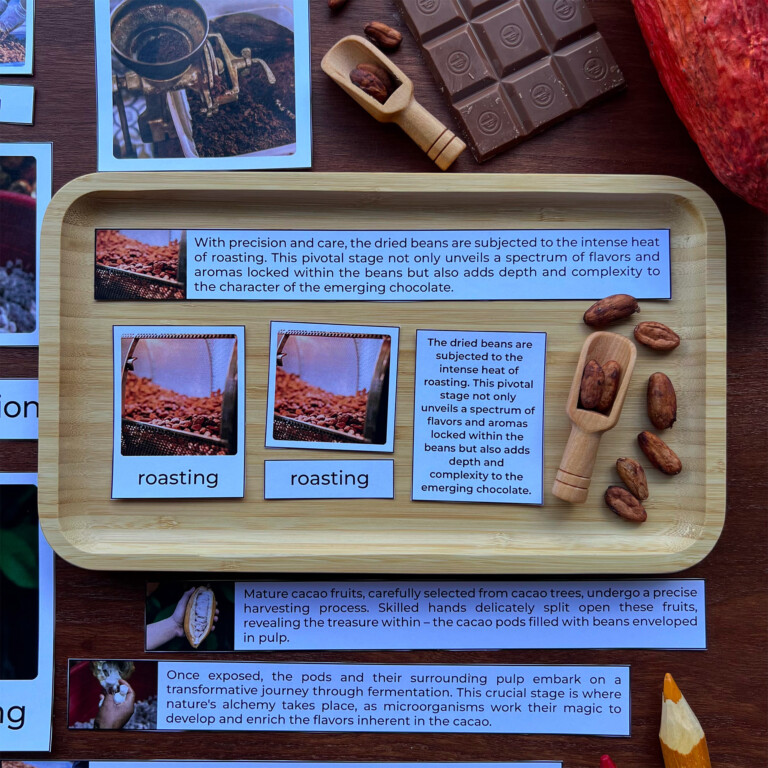
If you’re interested in purchasing my cacao unit study, you can find direct access to it below. If you only want a part of the unit, don’t worry, that’s also possible. In total, there are 4 different units available: the complete cacao unit, the cacao life cycle unit, the cacao anatomy unit, and the how chocolate is made unit.
The complete cacao unit consists of 66 pages and contains all kinds of information about cacao, including cacao color pantones, cacao history, interesting facts, life cycle, anatomy, and how it’s made. The cacao anatomy unit has 16 pages and includes posters, 3-part cards, 4-part cards, vocabulary cards, and activities. The cacao life cycle unit has 17 pages and includes posters, 3-part cards, 4-part cards, vocabulary cards, and activities. Finally, the how chocolate is made unit has 18 pages and includes 3-part cards, 4-part cards, and vocabulary cards
*If you feel more comfortable making your purchase on well-known platforms, you can also find my products on other e-commerce sites. Here are the links to my Etsy store and my Teachers Pay Teachers store.



